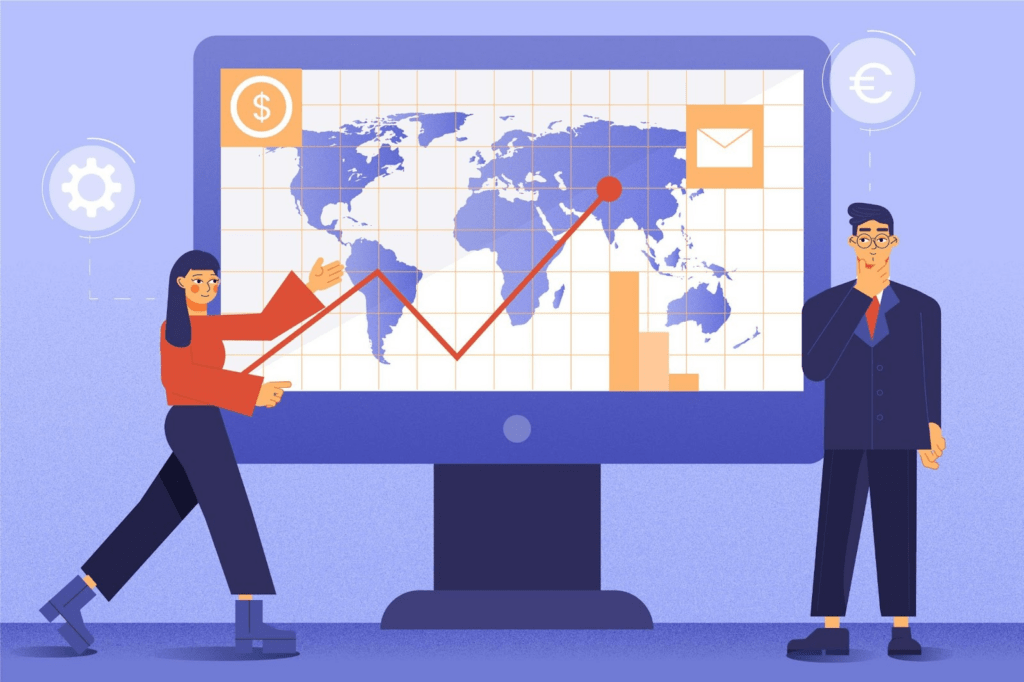With the vast amount of data available today, it’s no longer about having access to data, but rather about being able to effectively measure the value it brings to your business.
Understanding the return on investment (ROI) of your B2B data is essential to making informed decisions about how to allocate your marketing budget. In this blog, we’ll explore the various ways to measure the value of your investment in B2B data and the impact it can have on your bottom line.
So, if you want to know how to get the most out of your B2B data investment, keep reading!
B2B Data
As businesses become increasingly data-driven, B2B data has emerged as a crucial tool for organizations to make informed decisions about their sales and marketing strategies.
It refers to an array of information gathered about other businesses, such as customer contact information, company size, industry, technologies or software platforms in use, potential intent to make purchase investments, and more.
By analyzing this data, businesses can gain valuable insights into their target audience, identify potential leads, and improve their overall go-to-market effectiveness and marketing performance.
However, as with any investment, it’s important to measure the value of B2B data to ensure that it is worth the cost.
In this blog post, we will explore the key metrics to measure the ROI of B2B data, the types of data to track, best practices for measuring ROI, and tools to help you accomplish these goals.
However, as with any investment, it’s important to measure the value of B2B data in order to ensure that it is worth the cost. In this blog post, we will explore the key metrics to measure the ROI of B2B data, the types of data to track, best practices for measuring B2B data ROI, and tools to help you accomplish these goals.

Why B2B Data and Measuring Its ROI Is Crucial?
B2B data has become an essential part of modern marketing and sales strategies. It includes any data that can inform a business’s decisions regarding its target customers, competitors, and industry trends. Some common types are demographic data, firmographic data, technographic data, intent data, and more.
Measuring the value of B2B data is essential in order to ensure that a business is investing in the right data sources and using that data effectively. Without measuring ROI, businesses may end up spending money on data that does not provide the insights needed to increase sales, improve customer relationships, or otherwise achieve their goals. For instance, platforms such as ZoomInfo cost a significant amount in terms of license costs, and yet access to data is largely limited due to the platform’s credit-based system. So, although a company may have invested a significant amount of money in a seemingly extensive database, it may still provide limited access to consumable data, ultimately impacting revenue potential and in turn, the ROI
Key Metrics to Measure the ROI
To effectively measure the ROI of B2B data, there are several key metrics to consider:
Customer Acquisition Cost (CAC)
The customer acquisition cost is the amount of money a business spends on acquiring a new customer. This includes marketing and advertising costs, sales costs, and any other expenses incurred during the sales process. By tracking your CAC, you can determine the effectiveness of your sales and marketing approach and optimize your efforts to improve customer acquisition.
Customer Lifetime Value (CLV)
The customer lifetime value is the total amount of revenue that a customer is expected to generate for a business throughout their relationship. By tracking CLV, businesses can determine the most valuable customers and develop strategies to retain those customers and increase their lifetime value.
Return on Investment (ROI)
ROI is a measure of the overall profitability of a business’s investment in B2B data. To calculate ROI, divide the net profit by the total investment cost. This metric can help businesses determine if their investment is providing the desired return and make adjustments if needed.

B2B Data Types to Track
There are several different types of B2B data that businesses should consider tracking in order to gain a comprehensive understanding of their target audience and competitors. These include:
Firmographic data
Firmographic data includes information about a company, such as size, industry, location, and revenue. By tracking this data, businesses can identify potential leads, optimize their marketing strategies, and gain a better understanding of their competition.
Technographic data
Technographic data includes information about a company’s technology stack, such as the software and hardware they use. By analyzing this data, businesses can gain a better understanding of their target audience’s technology needs and preferences, develop more effective product offerings, and identify opportunities for partnership and collaboration.
Intent data
Intent data is a type of behavioral data that provides insights into a company’s buying intent. This data can be sourced from a variety of channels, including website visits, social media interactions, and email engagement. By tracking intent data, businesses can identify potential leads and develop personalized marketing strategies.
Best Practices for Measuring B2B Data ROI
To effectively measure the ROI of B2B data, it’s important to follow these best practices:
Define Key Performance Indicators (KPIs)
Determine the key metrics that matter most to your business’s goals, such as customer acquisition cost, customer lifetime value, and ROI. By setting specific KPIs, you can track progress and measure the effectiveness of your B2B data strategy.
Set measurable goals
Set specific and measurable goals for each KPI, and define how these goals can be achieved using B2B data. This will help you identify the actions needed to improve performance and measure the progress toward your goals.
Conduct A/B testing
Conduct A/B testing to compare the effectiveness of different marketing and sales approaches. By testing different variables such as ad copy, landing page design, or subject lines, businesses can identify the most effective strategies and optimize their approach.
Monitor and analyze metrics regularly
Monitor the metrics regularly and analyze the data to identify trends and patterns. This will help you identify areas of improvement, pinpoint what is working and what is not, and make necessary adjustments to optimize your B2B data strategy.

Tools to Measure ROI
There are several tools available to help businesses measure the ROI of their B2B data:
Business Intelligence Software
Business intelligence software provides a way to aggregate data from multiple sources and analyze it in real-time. These tools provide predictive analytics and visual data representations that can help businesses to make better-informed decisions about their B2B data strategy.
Customer Relationship Management (CRM) Software
CRM software helps businesses manage their sales and customer relationships. By integrating B2B data, businesses can track all customer interactions and gain a better understanding of their behavior and needs.
Marketing Automation Software
Marketing automation software automates the process of marketing tasks such as email marketing, social media, and advertising. By tracking B2B data, businesses can optimize their approach and improve the effectiveness of their marketing campaigns.
Conclusion
Measuring the ROI of B2B data is essential for businesses to determine the effectiveness of their investment and optimize their sales and marketing strategies.
By tracking key metrics such as customer acquisition cost, customer lifetime value, and ROI, businesses can gain valuable insights into their target audience and develop more effective strategies.
By following best practices and leveraging the right tools, businesses can make more informed decisions about their B2B data strategy and achieve their goals more efficiently.
Start measuring your B2B data ROI today to gain a competitive edge in your industry.
GUEST POST
Ariana Shannon
Marketing Director
SalesIntel